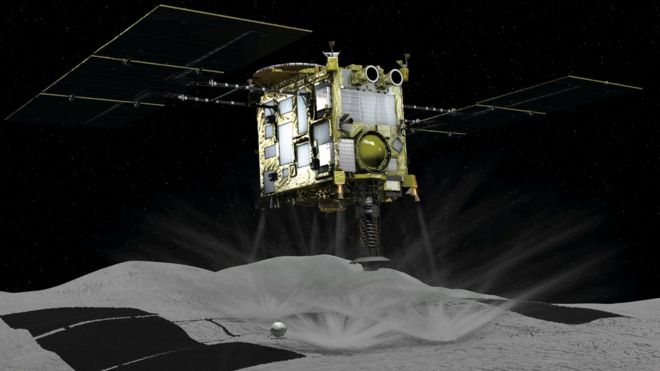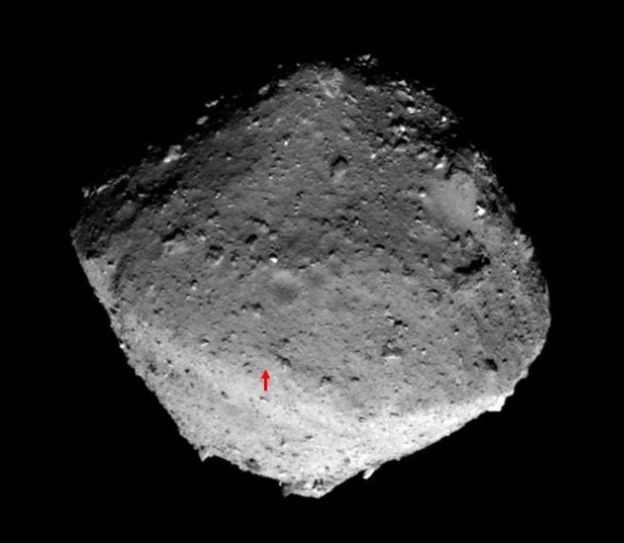Hayabusa-2: Japan spacecraft touches down on asteroid
 REUTERS
REUTERS
A Japanese spacecraft has touched down on an asteroid in an attempt to collect a sample of rock from the surface.
The Hayabusa-2 probe was trying to grab the sample from a pre-chosen site on the asteroid Ryugu just before 23:00 GMT on 21 February.
The spacecraft reached asteroid Ryugu in June 2018 after a three-and-a-half-year journey from Earth.
It is expected to return to Earth with the rocky material it has cached in 2020.
During sample collection, the spacecraft approached the 1km-wide asteroid with an instrument called the sampler horn. On touchdown, a 5g "bullet" made of the metal tantalum was fired into the rocky surface at 300m/s.
The particles kicked up by the impact should have been be caught by the sampler horn.
"We made a successful touchdown, including firing a bullet," said Hayabusa-2 project manager Yuichi Tsuda.
"We made the ideal touchdown in the best conditions," he said.
 AFP
AFP
The spacecraft began descending from its "home position" of 20km above the asteroid's surface in the early hours of 21 February (GMT) - several hours later than planned.
Ryugu belongs to a particularly primitive type of space rock known as a C-type. The near-Earth asteroid (NEA) is a relic left over from the early days of our Solar System.
 JAXA ET AL
JAXA ET AL
Prof Alan Fitzsimmons, from Queen's University Belfast, told BBC News: "We think we understand how carbon-rich asteroids migrate from the asteroid belt to become near-Earth asteroids, but the samples from Ryugu will allow its history to be explored.
"After the Rosetta mission, it's now clear that most of Earth's water did not come from comets in the early days of the Solar System. We believe carbon-rich (C-type) asteroids may have significant amounts of water locked up in their rocks. It's possible such asteroids may have brought to Earth both the water and the organic material necessary for life to start.
"These samples will be crucial in investigating this possibility."



Ingen kommentarer:
Legg inn en kommentar
Merk: Bare medlemmer av denne bloggen kan legge inn en kommentar.